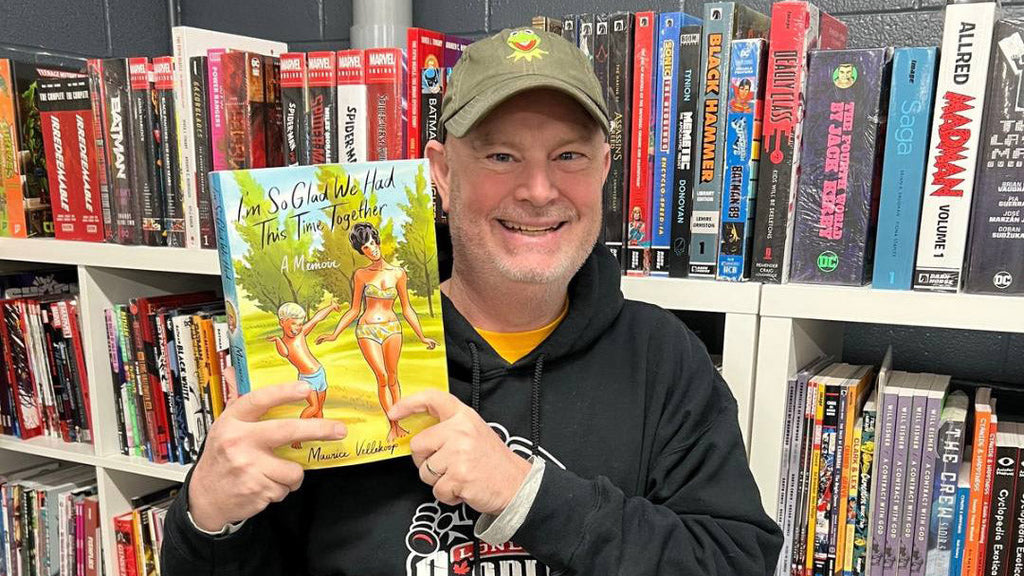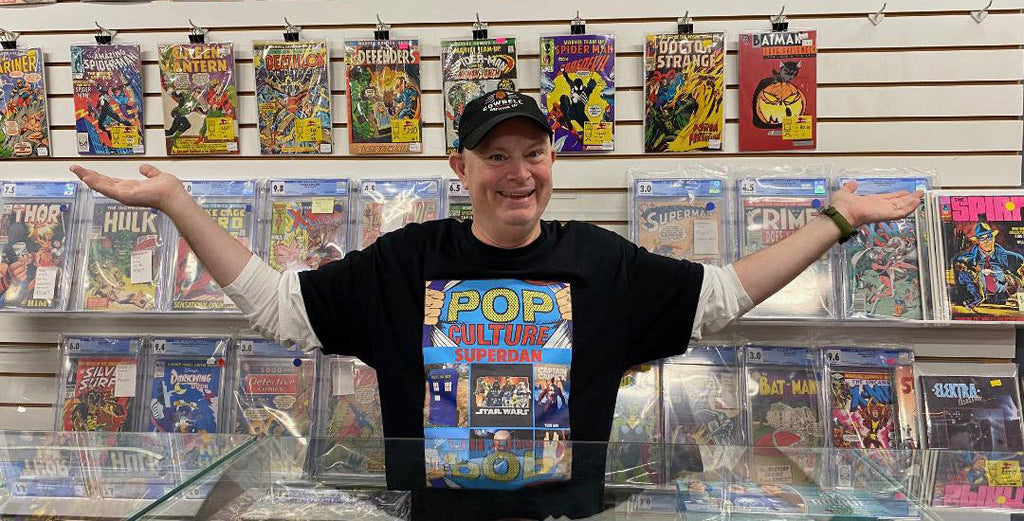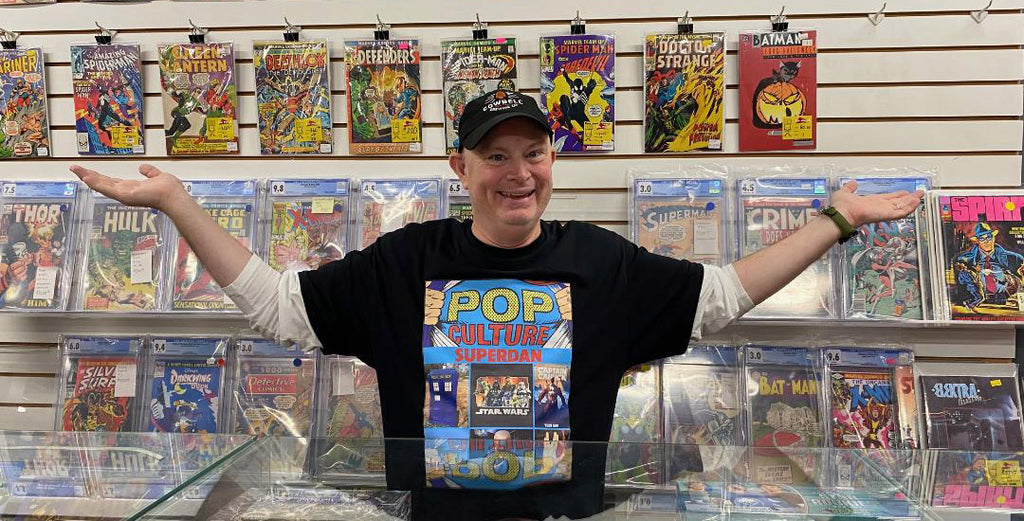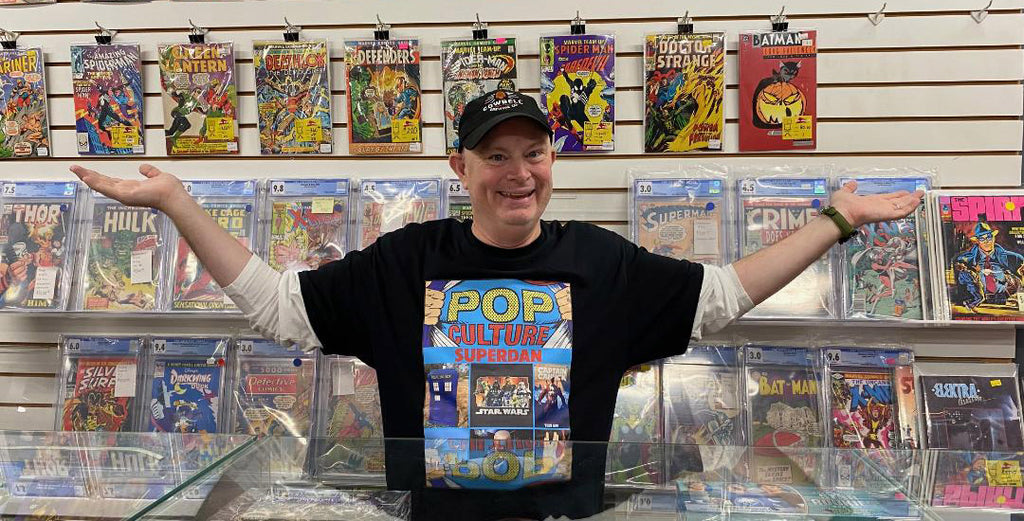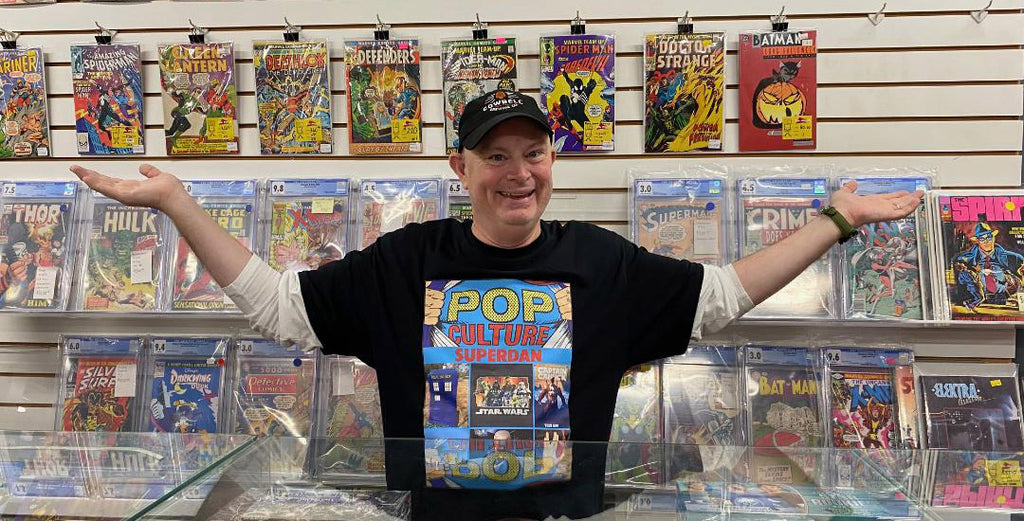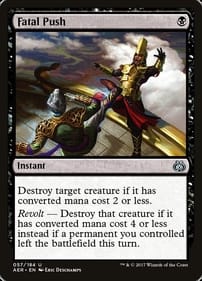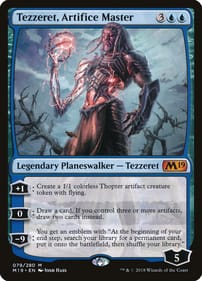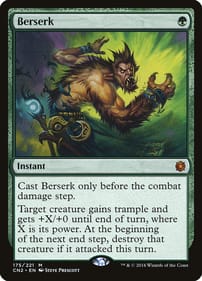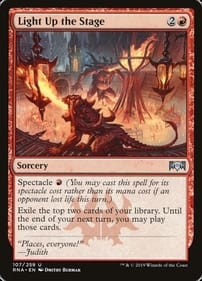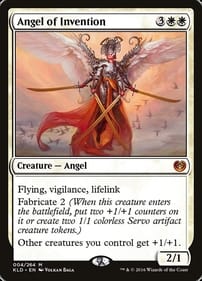GNG Meets to Talk About Toronto Coming-of-age Memoir
By Dan Brown SPOILER WARNING: This column contains plot details from Maurice Vellekoop’s I’m So Glad We Had This Time Together, so if you value surprise, stop reading now! Here’s the rundown on the most recent meeting of the L.A. Mood Graphic-Novel Group, which took place Saturday, May 10. The book: I’m So Glad We Had This Time Together by Toronto graphic artist Maurice Vellekoop. The discussion: The book we all read falls squarely into the Canadian school of graphic memoirs – for some reason, homegrown creators are really good at telling their own origin stories. In fact, they are the best in the world. In this particular case, Vellekoop puts the focus on his own upbringing as the son of religious Dutch immigrants who settled in Toronto. L.A. Mood Comics & Games co-owner Carol Vandenberg pitched the book in January for our 2025 reading list as she, too, is the child of a Dutch immigrant family. Carol said she recognized a bit of her experience in the book’s details, like Vellekoop’s mother making clothes for her children and his childhood home being decorated with Rembrandt and Vermeer paintings. It was the Walt Disney movie Fantasia that sparked Vellekoop’s imagination as a child. He attended a screening with his father, who is a central figure in the artist’s story. One moment his dad is spanking him, the next spoiling him. Talk about mixed messages! During our opening lightning round – everyone around the table gets two minutes to share their initial thoughts – almost every group member said they enjoyed or appreciated the book. We did talk about the graphic nature of the story – there are a number of sex scenes as Vellekoop embarks on his voyage of self-discovery. We briefly discussed how much of a creator’s personal life the reader ought to see, with some members noting how Vellekoop wanted to be transparent about his identity. One central paradox runs through the whole story: According to their religious beliefs, his parents indicate it’s fine for Vellekoop to be gay, but he can’t get into heaven if he ever acts on his sexuality. Naturally, this contradiction messes him up. Later in life, Vellekoop goes into therapy. After a number of tries, he finds a therapist who helps him make sense of his feelings about his mother and father. Vellekoop is more than up to the challenge of making the process of therapy – therapist and client sitting and talking – visually interesting for the reader. In the hands of a lesser artist, those sections of the book might not have been as compelling. One of the devices he uses is what I would call “the devil and angel on his shoulders.” Vellekoop gives the two conflicting voices in his head a physical form as clouds of emotion, and finally – at the moment of his biggest breakthrough in therapy – they dive back into his head. Another element group members mentioned liking is the memoir’s depiction of Toronto over the years. In one party scene in the 1980s, for instance, I spotted one of my former Ryerson journalism profs – Vellekoop did not skimp on any details. He got the look and feel of different eras in Toronto history right. Further reading: Check out Seth’s It’s A Good Life If You Don’t Weaken, Michel Rabagliati’s Paul Moves Out, and Jeff Lemire’s next book, which will be released on July 15, is called 10,000 Ink Stains: A Memoir. L.A. Mood’s Graphic-Novel Group meets the second Saturday of every month. Next month’s selection is Dean Motter’s Mister X: The Modern Age. We are on a roll with Canadian books in recent months! We’ll reconvene June 14 at the gaming tables in the store at 11 a.m. All are welcome to join the discussion! Dan Brown has covered pop culture for more than 32 years as a journalist and also moderates L.A. Mood’s monthly graphic-novel group.
GNG Discusses The Road, as Well as New Instalment of Crimson Fall
By Dan Brown SPOILER WARNING: This column contains plot details about the graphic-novel adaptation of The Road, so if you value surprise, stop reading now. It also contains information about Derek Laufman’s The Shore Tower, so the same warning applies. Here’s the rundown on the latest meeting of the L.A. Mood Graphic-Novel Group, which took place Saturday, April 12. The books: Manu Larcenet’s adaptation of the Cormac McCarthy’s novel The Road. Later, Byron graphic novelist Derek Laufman joined us to discuss his latest book, Crimson Fall: The Shore Tower. The Road is a post-apocalyptic tale of a father and son eking out a bleak existence in a shattered American landscape choked with clouds of ash. The Shore Tower continues the monster-hunter adventures of an unlikely duo in a medieval world. The discussion: We begin our meetings with a lighting round. Each person around the table has two minutes to outline their initial thoughts. Then we follow up with a deeper discussion of the ideas raised at the outset. I kicked off the meeting by saying if the point of The Road was to depress the reader, then it worked on me. I appreciate the detailed art by French cartoonist Larcenet, however I could not get past such a dark depiction of human nature. The story takes place after some kind of apocalypse. The survivors must scrounge to live, so this is a society devouring itself. Literally. The bad guys become cannibals to survive. At one point in their journey, the father and son discover a kind of storehouse full of living humans with parts missing – they are being kept as a source of food. So if you’re looking for an uplifting story, a fable about the human spirit overcoming adversity, this isn’t it. There is a slight note of hopefulness at the end of the book, but not every member of the group read the conclusion the way I did. We also discussed the symbolism of the road itself, which is a relic from the previous civilization that looms large in the story. The father character is compelled to keep himself and his son walking, never settling in any safe haven for long. Even though Larcenet’s illustrations are amazingly detailed, the art couldn’t save the book for me. It’s too far from my own view of human nature. Halfway through our hour-long meeting, Byron comic creator Derek Laufman, who has worked with such companies as Marvel and Hasbro, sat down with us to talk about his latest project, Crimson Fall: The Shore Tower. It shows what happens when a knight and priest, at the behest of a local ruler, head to an island cloaked in mystery to find out why the lighthouse isn’t working. The book is pretty straightforward, although there is at least one big twist. Laufman described how, even though the finished product follows a straight line, he spent months trying to make a more complicated version of the story work in his imagination. After months of thinking, he couldn’t pull it off, so he went with a streamlined premise – although some of the elements from that earlier version are still present. Laufman talked about the joys of working on his own intellectual property, as opposed to illustrating characters like Spider-Man (one time, Laufman even designed the Marvel Christmas card!). He also explained how the leads in Crimson Fall are really the two halves of one persona – half is wise and thoughtful, the other impatient and action-driven. Further reading; I don’t think I’ll be picking up the original novel version of The Road, or checking out the motion picture starring Viggo Mortensen. But I do recommend the prose novel Lucifer’s Hammer by Larry Niven and Jerry Pournelle – like The Road, it takes place in a crumbling post-apocalyptic society in which some people have reverted to cannibalism, but there’s an equally powerful group of survivors fighting to restore order and technology. That’s more like it. As far as Laufman’s work goes, he has several other titles worth ordering: RuinWorld, the Witch of Wickerson, Bot 9. I would recommend any of these if you are a parent whose child is interested in fun adventure stories. The language used in his Crimson Fall books, on the other hand, is decidedly adult. L.A. Mood’s Graphic-Novel Group meets the second Saturday of each month. Next month’s selection is Maurice Vellekoop’s memoir of growing up gay in Toronto as part of a strict Dutch family, I’m So Glad We Had This Time Together. We’ll be meeting May 10 at the gaming tables in the store at 11 a.m. All are welcome to join the discussion! Dan Brown has covered pop culture for more than 32 years as a journalist and also moderates L.A. Mood’s monthly graphic-novel group.
New Volume Of Public Domain Deepens, Enriches Tale Of Competing Creators
By Dan Brown Out this month, the second volume of Chip Zdarsky’s Public Domain graphic novel is a rare thing. It’s a sophomore collection that enriches the storyline of an ongoing comic series, putting the characters in new and surprising situations. Subtitled Build Something New, it grabbed my attention, then left me wanting more.If you haven’t checked it out, Public Domain tells the story of two aging comic creators.One, the writer, is lionized by fans of pop culture who adore him at comic conventions. The other, the artist, is held in high regard by comic purists but got shafted after helping to create an enduring character that has spawned a multimedia empire, including big-screen adaptations. If that sounds like Stan Lee and Jack Kirby to you, that’s because it’s supposed to. Here the Lee figure is the crusty Jerry Jasper and the Kirby equivalent is Syd Dallas. The launching point for the first volume, collecting the initial four issues of Public Domain, was something like, “What if Jack Kirby had got legal control of the characters he drew for Marvel Comics in the 1960s?” Like Lee, Jasper’s talents as a scribe are questionable and his true talent is self-promotion. Like Kirby, Dallas was an influential artist but doesn’t get enough props for the pioneering work he did back in the day. A superhero named the Domain is the duo’s most famous creation. When the series begins, the Domain is the centrepiece of the Singular Comics empire, which includes any number of slick, special-effects driven motion pictures. The face of the actor who plays him is plastered on billboards, buses, you name it. The fact Dallas is forgotten except by the most diehard fans doesn’t sit well with his two sons. After a legal knife fight, Dallas gets the rights to produce Domain comics back, and having missed most of their childhood because he was metaphorically chained to the drawing table, Dallas wants to make the return of his Domain to the printed page a family affair. This leads to a situation that would have delighted many real-life comic fans: Both creators can publish their own versions of the character. In Build Something New, the reader sees the beginnings of a fresh battle, as the former partners prepare to go head-to-head. The second volume goes way beyond the initial premise. The story deepens, broadens, and gets even richer. As in the first Public Domain anthology, there are many twists, almost every one unanticipated by me – which I love. Zdarksy, a Canadian artist/writer, is firing on all cylinders here. His art is economical. His dialogue is lively. The established characters are well on their way to being fully fleshed out, so he introduces interesting new ones. Part of this volume takes place in the 1980s, and those segments had a melancholy-yet-energetic feel that, for whatever reason, reminded me of the flashbacks in the landmark DC series, Watchmen. And even though Public Domain was inspired by actual comics history, Zdarsky keeps the industry in-jokes to a minimum. If you’re at all interested in stories about the people behind the superheroes you love, you should read this new graphic novel. In fact, do yourself a favour: Get BOTH volumes of this engrossing series – the one just published and the previous collection as well. You’ll thank me. Dan Brown has covered pop culture for more than 32 years as a journalist and also moderates L.A. Mood’s monthly graphic-novel group.
Dan Brown's Graphic-novel Gift Guide
By Dan BrownThe holidays are looming, and you’ve been racking your brains for ideas of what gifts to get your family and friends, but coming up short.Well, you’ve come to the right place.We are now at the point where there is a graphic novel for everyone on your list, so please consider the following suggestions as you do your Christmas shopping.For your husband/boyfriend: Any Tintin adventure by HergeFor your wife/girlfriend: Jillian Tamaki’s Super Mutant Magic AcademyFor your dad: Giant by MikaelFor your mom: Any collection of Peanuts comic strips by Charles SchulzFor your brother: Essex County by Jeff LemireFor your sister: Jonathan Dyck’s ShelterbeltsFor your young son: Any Geronimo Stilton graphic novel by Elisabetta DamiFor your young daughter: The Bad Guys Book 1 by Aaron BlabeyFor your best friend: Petals by Gustavo BorgesFor the Marvel fan in your life: Origins of Marvel Comics (the 2024 Deluxe Edition)For the DC fan: Irredeemable by Mark Waid, Peter Krause and Diego BarretoFor the person in your life who loves superhero movies: Robot Dreams by Sara VaronFor the person who hates superhero movies: Ghost World by Daniel ClowesFor the music fan in your life: Leonard Cohen: On a Wire by Philippe Girard For the history buff in your life: Fax From Sarajevo by Joe KubertFor the hockey fan in your life: Essex County by Jeff LemireFor the journalist in your life: Ten Days in a Mad-House: A Graphic Adaptation by Brad RiccaFor the photographer in your life: Weegee from Wauter Mannaert and Max de Radigues For the comics historian in your life: Brian Doherty’s Dirty Pictures (it’s prose)For the lover of newspaper cartoons: Joe Ollmann’s Fictional FatherFor the fan of CanCon: Are You Willing to Die for the Cause? by Chris Oliveros For the grad student in your life: Any of the Wendy titles from Walter ScottFor the theatre lover: Kill Shakespeare by Conor McCreery, Anthony Del Col and Andy Belanger For the lover of literature: Slaughterhouse-Five: The Graphic Novel adapted by Ryan North and Albert MonteysFor the fan of the 1970s: Mimi Pond’s Over EasyFor the fan of the 1980s: Duran Duran, Imelda Marcos and Me by Lorina MapaFor the fan of AI: The Wild Robot by Peter BrownFor the deep thinker in your life: Leslie Stein’s I Know You RiderFor the Muppet fan in your life: A Tale of Sand from Jim Henson and Ramon PerezFor the comics newbie: Either The Dark Knight Returns (Frank Miller) Watchmen (Alan Moore and Dave Gibbons) or The Complete Maus (Art Spiegelman)For just about everyone: Oh, the Places You’ll Go! by Dr. SeussIf you have any of your own gift suggestions, I’d love to hear them in the comment box below! Alternatively, what titles are you asking Santa Claus to leave under your tree? Dan Brown has covered pop culture for more than 32 years as a journalist and also moderates L.A. Mood’s monthly graphic-novel group.
Scary Halloween Graphic Novels
By Dan BrownIn time for Halloween, here’s a rundown of graphic novels that range from unsettling to creepy to scary to horrifying. Read them at your peril, boys and girls!Vision: The Complete Collection: Imagine you live in suburbia and your new neighbours turn out to be emotionless androids. Literally. This Tom King-written story ends with the Vision taking on pretty much the entire Marvel universe.Monsters Volume 1 and 2: These omnibuses, dubbed “monsterbuses,” collect classic tales by Jack Kirby from the 1950s and 1960s, when evil creatures came with names like Fin Fang Foom. Find out what the world was like before superheroes! Before Marvel was even Marvel!The Simon and Kirby Library: Horror!: See some utterly creep characters the King came up with before he switched to inventing the Marvel universe pretty much on his own. In addition to EC’s many gruesome titles, this is the kind of comic that got denounced by U.S. politicians for causing juvenile delinquency!Any EC collection: From the publisher that brought you the Crypt Keeper! It doesn’t matter which EC horror anthology you read (they have titles like Tales From the Crypt and Crypt of Terror), they are all great examples of EC’s thoughtful suspense and horror!Monsters: Originally envisioned as a story about the Hulk, this thick tome from Conan the Barbarian artist Barry Windsor Smith is as gorgeous as it is horrifying! A military experiment goes wrong and unsuspecting civilians pay the price! Nicely marries horror with a touch of magic realism.Something is Killing the Children Book One: You can file this series under the heading of “the title is the premise.” Something evil has been leaving a trail of lifeless tots in its wake in the sleepy small town of Archer’s Peak. Will a heroine rise to stop the slaughter of innocents? Written by James Tynion IV.Wild’s End: Your basic alien invasion story set between the wars. The twist: The characters who populate the British countryside are anthropomorphized animals. The alien invaders look kind of like Victorian-era street lamps and remind me a bit of Triffids. This ain’t no Watership Down!H.P. Lovecraft’s At the Mountains of Madness Volumes 1 and 2: This manga adaptation of Lovecraft’s story about a doomed Antarctic expedition is made even more unworldly by the fact it’s a manga. Japanese creator Gou Tanabe takes his time to recount this encounter between humankind and the previous alien inhabitants of this planet.The Nobody: This Jeff Lemire joint, which made nary a splash when it came out in 2009, asks the question, What if the Invisible Man came to Essex County? Yes, I know Lemire never specifically says the story takes place in Southwestern Ontario, but it’s easy to imagine it does.Snotgirl Volume One: Green Hair Don’t Care: Written by Londoner Bryan Lee O’Malley (yes, he does stuff other than Scott Pilgrim!) this is a psychological drama featuring an influencer named Lottie Person. The fun comes from trying to guess how much of her adventures are really happening and how much of the action is in Lottie’s head. Vampirella Archives Volume One: My favourite version of Vampirella is the one featured in these stories from 1970s Warren Publishing magazines that were drawn by Jose Gonzalez. Giving the character a science-fiction twist – in this continuity, vampires are from the planet Drakulon – infused her stories with that X factor I was looking for as a kid.Ducks: Two Years in the Oil Sands: What does Kate Beaton’s account of her time in the oil patch have to do with Halloween? If you’ve ever wondered how an entirely male society would work, Ducks explores that theme in horrifying detail. Ducks is all the scarier for the fact it really happened. The old standbys: There’s also the Walking Dead for zombie fans, 30 Days of Night for vampire enthusiasts, and Hellboy books like Conqueror Worm for fans of the paranormal.Your suggestions: What are YOU reading this spooky season? I want to hear it in the comment box below!Dan Brown has covered pop culture for more than 31 years as a journalist and also moderates L.A. Mood’s monthly graphic-novel group.
Wendy Keeps Turning Bad Decisions Into Funny Art
By Dan BrownThe Wendy Award is the fourth book in Walter Scott’s hilarious Wendy series. How is it different from her previous adventures? In this one, things take a metafictional turn.If you like comics that call attention to their own constructed nature, or you just find the hot mess Wendy and her masked friend Screamo a hoot, check it out.The Wendy Award takes the piss out of arts awards, museums, land acknowledgements, corporate sponsorships, life in the COVID era, addictions, sobriety meds, Gen Z, people who go by one name, and every pretentious panel discussion ever.The premise, such as it is, is that the title character gets nominated for a prestigious art award for her autobiographical comic strip, called Wanda. You follow?It turns out the people in Wendy’s life aren’t happy with how they are portrayed in Wanda. I’ll guess the inspiration for this theme is the way Scott’s previous work has been received by his own peers and acquaintances.The contemporary art prize is sponsored by the national chain Food Hut, whose slogan is “Because you gotta eat sometime!’ The prize includes an exhibition at “the prestigious Art Factory on the Toronto waterfront.” Since I’m more than skeptical about Canada’s arts establishment, I love this kind of comedy.Her fellow nominees include Winona, Octavia, Zima and Moonstone. The last of these is described as a “relentlessly ubiquitous artist of many mediums and collaborations.”Even though she is in line for the big award, this doesn’t mean Wendy’s perennially chaotic day-to-day existence as an aspiring artist is any less turbulent than it was in her previous books. She is still a sucker for wine and cocaine, and at one point takes a side trip to New York to find herself. She’s always trying to find herself.The strip is now in Seinfeld territory – remember the story arc in which the NBC sitcom showed Jerry pitching a sitcom to NBC? The Wanda Award is kinda like that when it bends back in on itself.Wendy crashes at the apartment of her friend Tina, who isn’t happy about the intrusion. “Maybe it’ll end up in your next book!” Tina yells as she tosses our harried heroine out on the street, terminating the tense visit.There are some nice touches here, including an experiment splash page and a panel that’s an homage to the William Burroughs/David Cronenberg acid trip Naked Lunch. While in the Big Apple, Wendy enters a cinema to watch a film in which moments from her own life are being projected on the screen almost in real time, recalling such self-reflexive motion pictures as Woody Allen’s The Purple Rose of Cairo.You can feel Scott pushing the boundaries, trying to stretch himself as a graphic novelist and move the form in new directions.At another point, an upset Wendy even asks for a respite from being the title character in a comic strip. “Can you please cut away to something else for a bit?” she says directly to the reader during a vulnerable moment.Between you and me, I was unsure Wendy would be able to sustain as many books as she has. But Scott has not run out of material and now, I am more than invested in this character, who always feels she is failing at life. The joke is still funny. I am in it to the bitter end, whenever that might come.Speaking of endings, The Wendy Award concludes with a wordless epilogue in which Wendy walks out of the Art Factory, leaving the white cube behind. Is she finally forsaking the world of art for something more substantial that can make her feel whole?I look forward to finding out!! Dan Brown has covered pop culture for more than 31 years as a journalist and also moderates L.A. Mood’s monthly graphic-novel group.


